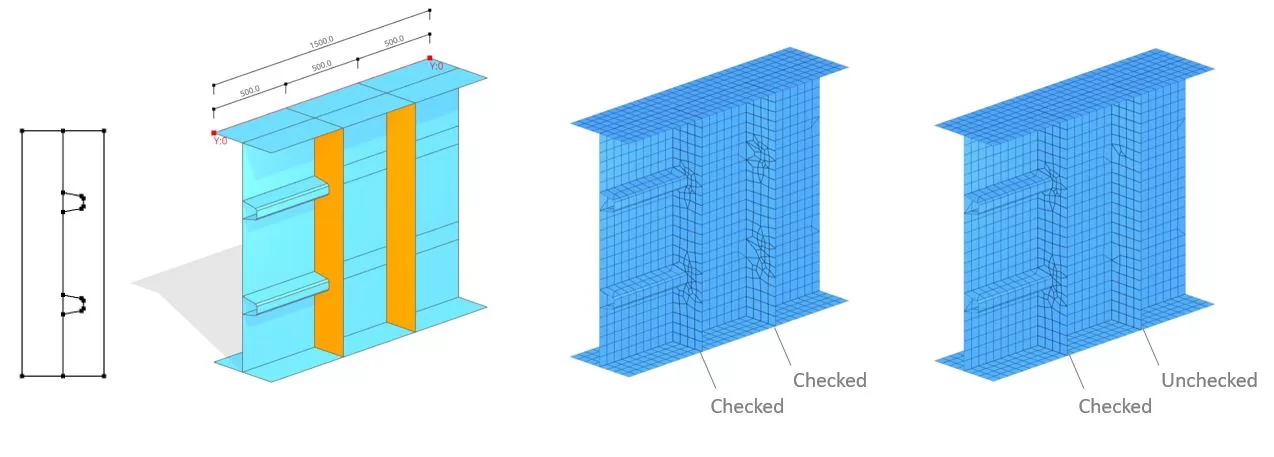Each member has a starting section i and an ending section j. A section consists of lines defined by two nodes, x,y in the section’s plane. Each line possesses a distinct thickness t and belongs to a specific material group. The reference point for x,y coordinates can be chosen arbitrarily in space for each section. The number of lines in each section must be consistent. Data for the table can either be entered manually or imported from an Excel sheet. Inoltre, section shapes can be imported from a DXF file stored on the user’s PC.
Update t: The common thickness can be changed for selected group of lines
Update Mat.: The common material group can be changed for selected group of lines
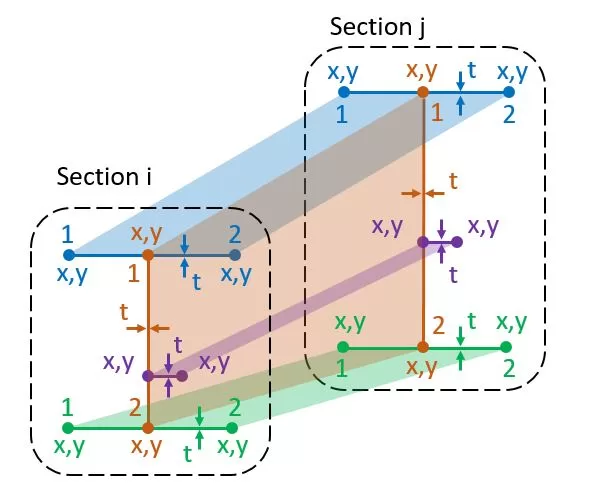
Data from DXF.: Select a DXF file from your PC. Choose the desired layer for section items. The reference point determines the origin for the x,y coordinates. Utilizzare il fattore per scalare le coordinate della sezione in millimetri. A tutte le linee verrà applicato uno spessore predefinito, che potrà essere modificato successivamente. Le entità DXF supportate includono: Linee, Polilinee, Archi, e Spline. Per archi e spline, la divisione del segmento è specificata per corrispondere alla dimensione della mesh preferita.
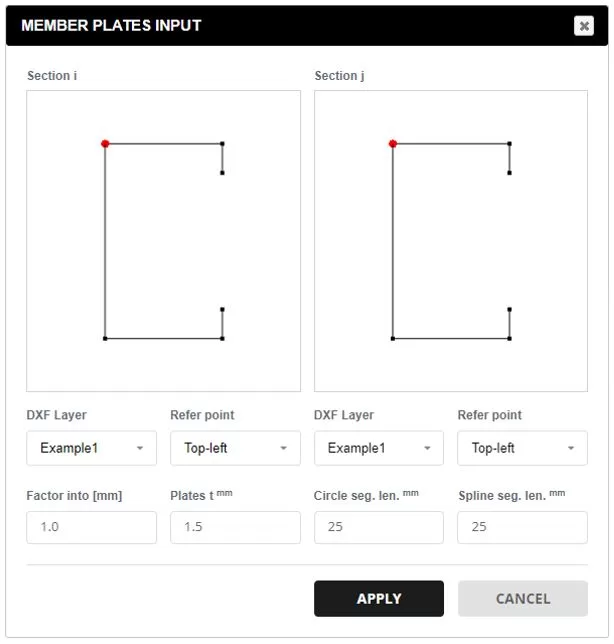
L'intero membro può essere rappresentato da una singola lunghezza L o da una serie di segmenti Li. Indipendentemente dal numero di segmenti, le linee di sezione iniziale e finale avranno le stesse coordinate definite nella scheda PROFILO. Each section can also have different Y position.
For each segment where L is not equal to 0, the thickness for a group of plates can be updated in the ‘Updated plate t column’. è un punto fisso nello spazio che non si muove 0 to hide the plate and a value greater than 0 to modify the thickness (t).
For segment sections, a diaphragm can be added if the ‘Polygon’ type is chosen. To specify one or more diaphragms, select the lines composing the shape. Only one line-gap closure is permitted to form the shape.
Holes can also be incorporated within the diaphragm. Per fare questo, define the hole shapes by selecting the corresponding lines that encompass the holes.
If a diaphragm is specified, then flanges or stiffeners can also be defined by selecting their associated lines. Each flange or stiffener has a starting and ending width (b1,b2), spessore t, and material group.
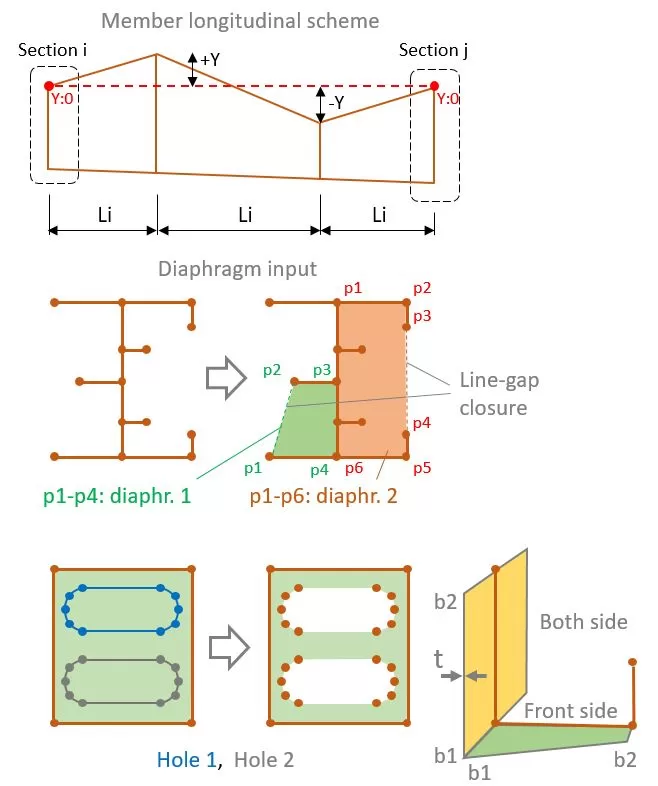
Esempio
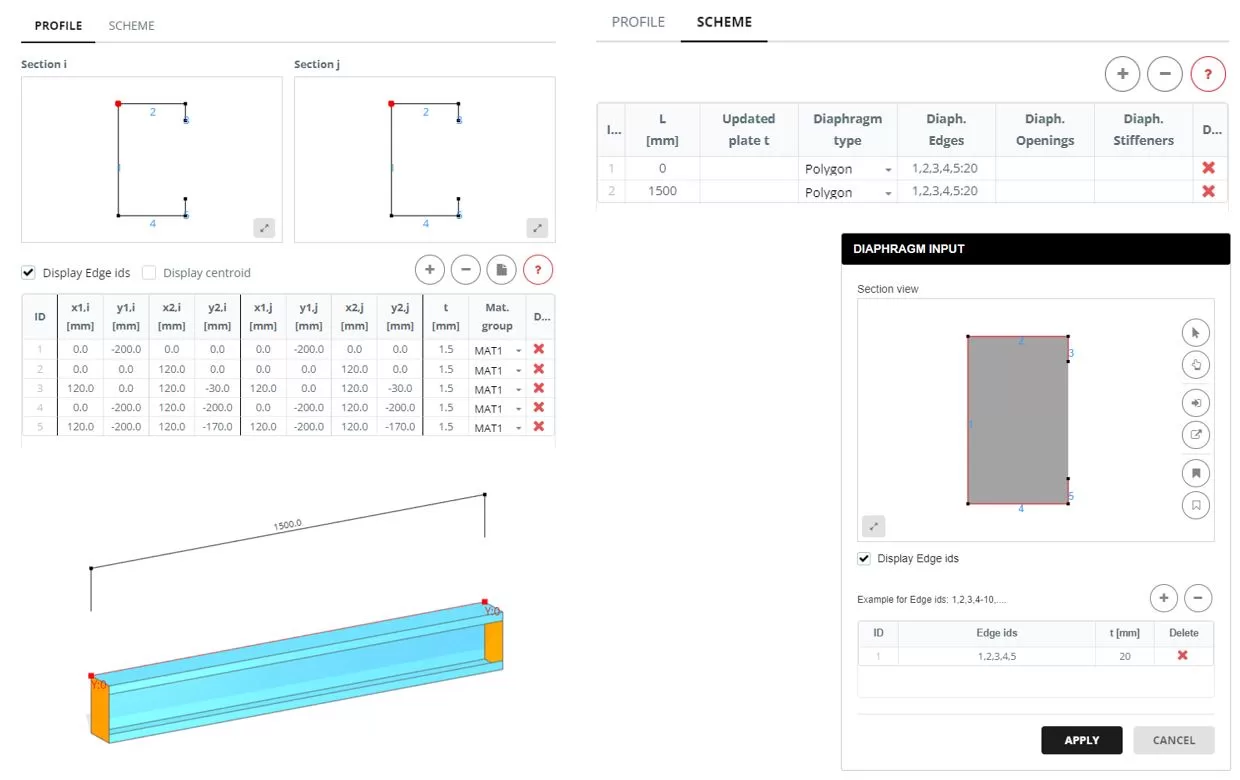
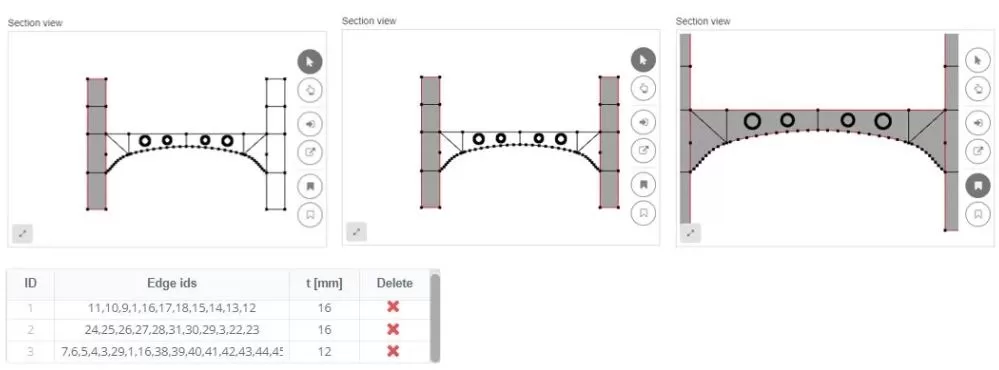
When arranging edges within a diaphragm, they can be factored into the meshing pattern. Ad esempio, a situation may arise where a longitudinal stiffener is connected to a vertical one. In such scenarios, the ‘inner edges’ option should be activated. Tuttavia, se l'irrigidimento verticale non è collegato a nulla, questa opzione può essere disattivata.
